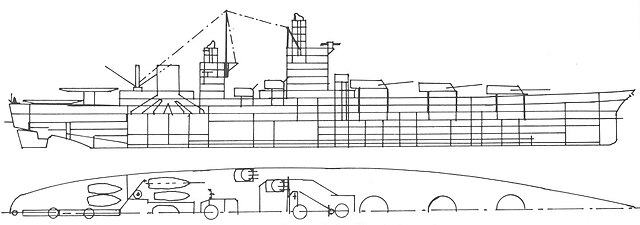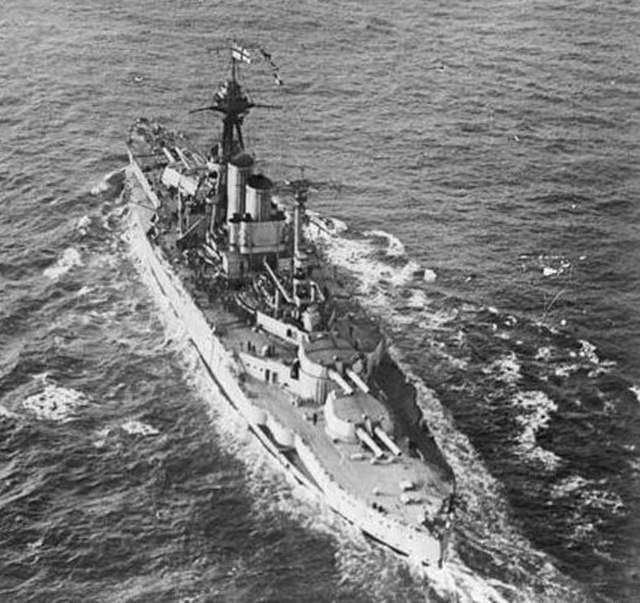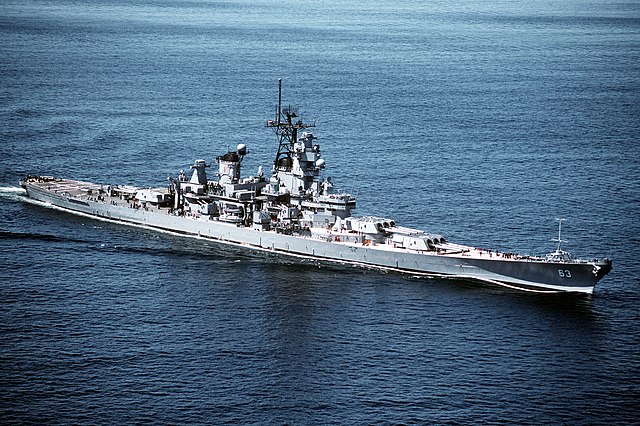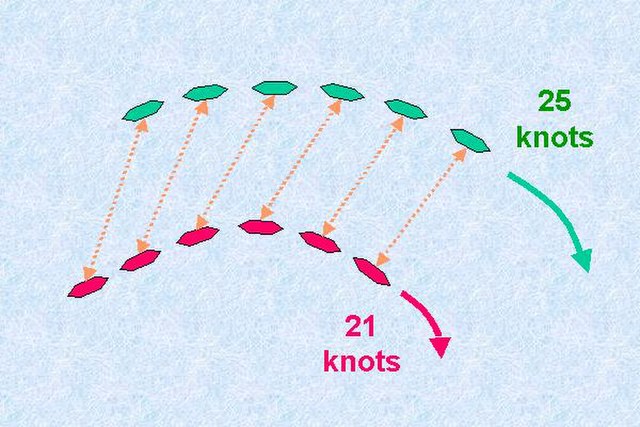North Carolina-class battleship
The North Carolina class were a pair of fast battleships, North Carolina and Washington, built for the United States Navy in the late 1930s and early 1940s.
North Carolina underway on 3 June 1946. By this time, many of the light anti-aircraft weapons (Bofors 40 mm and Oerlikon 20 mm) mounted during the war had been removed, while more modern radars had been mounted on its fore and main masts.
North Carolina seen from the air on 17 April 1942
North Carolina fires a three-gun salvo from its number one turret
The 32,250-long-ton (32,770 t) design "A" was one of the first proposals. Unlike "B" and "C", it was far below the treaty-mandated limit of 35,000–tons. It would have carried nine 14-inch guns in its main battery; although all of the turrets were forward of the superstructure, the guns could still fire forward provided that they were elevated to 4.5 degrees or more. The secondary battery planned was twelve 5-inch (127 mm) were unusually arranged in triple mounts.
A fast battleship was a battleship which in concept emphasised speed without undue compromise of either armor or armament. Most of the early World War I-era dreadnought battleships were typically built with low design speeds, so the term "fast battleship" is applied to a design which is considerably faster. The extra speed of a fast battleship was normally required to allow the vessel to carry out additional roles besides taking part in the line of battle, such as escorting aircraft carriers.
HMS Queen Elizabeth, the first "fast battleship" of the Dreadnought era, in 1918
French battleship Dunkerque
USS Missouri, among the last "fast battleships", would serve until 1992
Figure 1. Concept that maneuverability and armament were more important than speed. A slower ship with larger guns could render a speedier ship's advantage moot.








